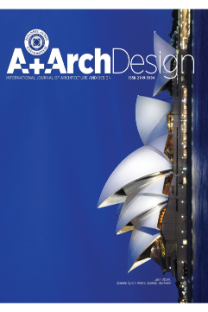Architectural Heritage in Medium and Small Syrian Cities: Management Advanced Strategies for Postwar Recovery
During Syria’s war, the architectural heritage suffered significant damage in many cities, ranging from minor damage to complete destruction. Moreover, the poor or absence of advanced heritage management that supports the recovery of these cities, especially in medium and small cities where attention has been focused on large cities, exacerbated the problem. The paper suggests directing attention to medium and small cities with traditional fabric. The city of Ariha, which has a population of 80,000, was chosen to study its current status, defining its architectural heritage and applying advanced architectural heritage management strategies that depend on advanced techniques and information technology. Reviewing International cases and extracting the best methodologies compatible with the Syrian context, such as reuse, GIS, laser scanning, and 3D modeling, which will contribute to preserving this heritage and help to make decisions to support the recovery of these cities during and post-war era.
Keywords:
Heritage, Management, Syria Medium City, Ariha,
___
- [1]Allegretti, F., del Curto, D., & Mazza, S. (2019). Advanced geomatics and conservation management plan for preserving 20th century architectural heritage. ISPRS Annals of the Photogrammetry, Remote Sensing and Spatial Information Sciences, 42(2/W11), 63–70. https://doi.org/10.5194/isprs-Archives-XLII-2-W11-63-2019
- [2]Angelini, M. G., Baiocchi, V., Costantino, D., & Garzia, F. (2017). Scan to BIM for 3D reconstruction of the papal basilica of saint Francis in Assisi in Italy. International Archives of the Photogrammetry, Remote Sensing and Spatial Information Sciences - ISPRS Archives, 42(5W1), 47–54. https://doi.org/10.5194/isprs-Archives-XLII-5-W1-47-2017
- [3] Barakat, S. (2021). Necessary conditions for integrated approaches to the post-conflict recovery of cultural heritage in the Arab World. International Journal of Heritage Studies, 27(5), 433–448. https://doi.org/10.1080/13527258.2020.1799061
- [4] Belal, A., & Shcherbina, E. (2021). Post-war Planning for Urban Cultural Heritage Recovery. E3S Web of Conferences, 263. https://doi.org/10.1051/e3sconf/202126305054
- [5] Belal, A., & Sliclieibina, E. (2019). Heritage in post-war period challenges and solutions. IFAC-PapersOnLine, 52(25), 252–257. https://doi.org/10.1016/j.ifacol.2019.12.491
- [6] Bose, S. (2015). State and management of architectural heritage in Kolkata. Journal of Architectural Conservation, 21(3), 178–194. https://doi.org/10.1080/13556207.2016.1142754
- [7] Faiz Kousara. (1988). Travelers in Idlib Governorate"الرحالة في محافظة ادلب": Vol. the second (the first). Aleppo - Alsharq Prenter.
- [8] Kousa, C., & Pottgiesser, U. (2020). Post Syrian-war material recovery, reuse and transformation in the Old City of Aleppo. Journal of Cultural Heritage Management and Sustainable Development, 10(1), 90–103. https://doi.org/10.1108/JCHMSD-07-2019-0085
- [9]Lorenzo Aspres, A. (2017). La reutilización hotelera del patrimonio monástico gallego. Cuadernos de Estudios Gallegos, 64(130), 431. https://doi.org/10.3989/ceg.2017.130.12
- [10]Piquer-Cases, J. C., Capilla-Tamborero, E., & Molina-Siles, P. (2015). The virtual reconstruction of architectural heritage and rrs methodological application. In EGA Revista de Expresion Grafica Arquitectonica (Vol. 20, Issue 25, pp. 258–267). Universitat Politecnica de Valencia. https://doi.org/10.4995/ega.2015.3674
- [11]Romão, X., Paupério, E., & Pereira, N. (2016). A framework for the simplified risk analysis of cultural heritage assets. Journal of Cultural Heritage, 20, 696–708. https://doi.org/10.1016/j.culher.2016.05.007
- [12] Trizio, I., Brusaporci, S., Luigini, A., Ruggieri, A., Basso, A., Maiezza, P., Tata, A., & Giannangeli, A. (2019). EXPERIENCING THE INACCESSIBLE. A FRAMEWORK FOR VIRTUAL INTERPRETATION AND VISUALIZATION OF REMOTE, RISKY OR RESTRICTED ACCESS HERITAGE PLACES. The International Archives of the Photogrammetry, Remote Sensing and Spatial Information Sciences, XLII-2/W15, 1171–1178. https://doi.org/10.5194/isprs-archives-XLII-2-W15-1171-2019
- ISSN: 2149-5904
- Başlangıç: 2015
- Yayıncı: İstanbul Aydın Üniversitesi
